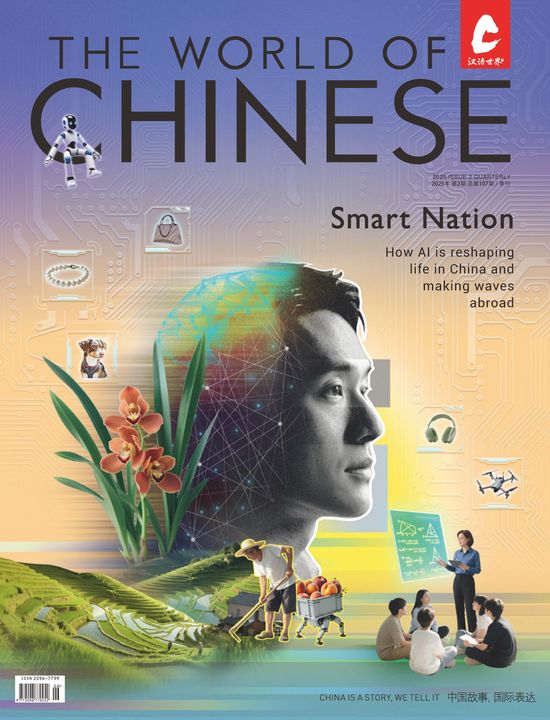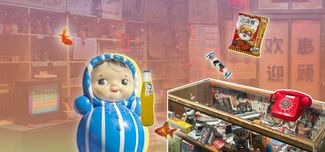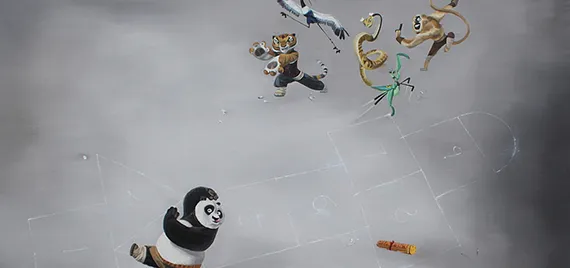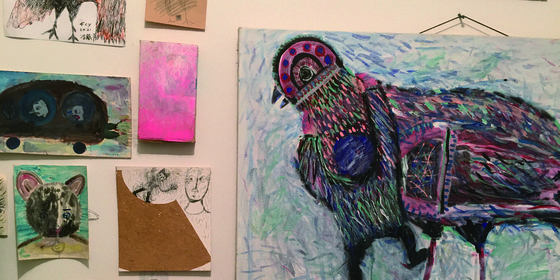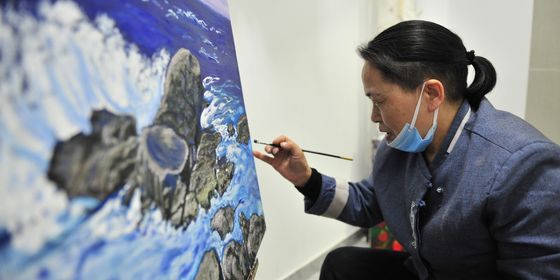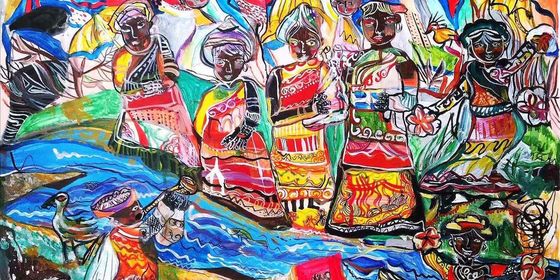Childhood memories inspires this collection of work
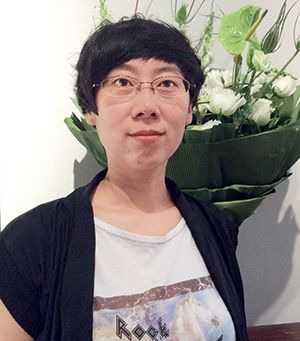
Ma Hongling ( 马洪玲 )
Rather than opt for controversy, Ma Hongling tends more toward nostalgia. Her most recent work “Hopscotch” is inspired by her childhood memories. Born in 1981, she graduated from Shenyang Normal University in Liaoning Province. Her works are mainly shown in Beijing and she was recently a feature of the Chinese Female Artists exhibition in 2015.
What inspired you to create such a playful series?
Hopscotch (跳房子) is an ancient Chinese game but is also international; I liked to play it when I was a little girl. Nowadays fewer and fewer kids are familiar with this game, so I wanted to express my childhood memories through this game. It reflects the conflict between me and the cultures of modern East and West that merged together.
Why did you replace actual children with toys?
I think this generation of ours has not experienced much impact from historical events or turmoil, most of the information comes from TV and books and mostly cartoon culture. So, I replaced the kids from the past with our toys today. In my opinion, toys are more “interesting” than kids. But “interesting” is just something on the surface. I am trying to create an absurd atmosphere through what I find “interesting”. In the works, the spirit and personality of these toys have been dissolved and replaced. They represent certain objects, certain memories, certain fragments in our life, and create unusual, absurd, cold, and lonely emotions.
Some kids have been replaced with Chinese toys, some with Western. Why is that?
I feel a very strong connection with traditional Chinese culture; I especially like Han Dynasty pottery figurines. When I put them in the Tang Dynasty hopscotch pattern, there is a kind of feeling through time and space, both absurd and tense. At the same time, we are inevitably impacted by Western culture, like Kung Fu Panda for example.
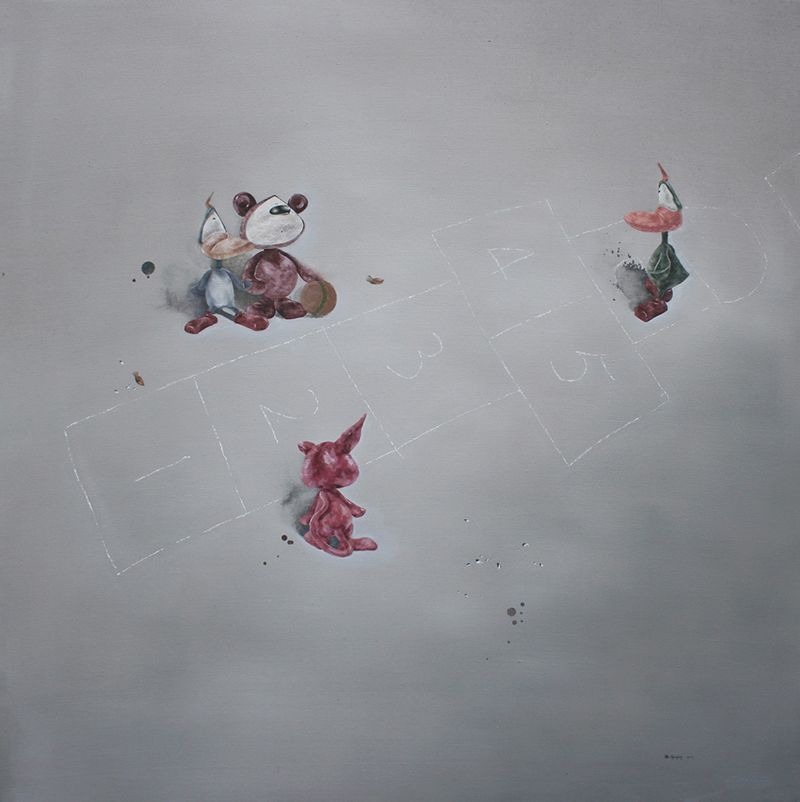
Hopscotch No.3, 2012
Why hopscotch?
Where do you think “paradise” is in those games? In this world, every day God shouts “in” or “out”: some people’s lattice patterns are too big; on the other hand, some are too small. If the lattice is too big, it might be difficult to jump; if the grid is too small, there are no chances to jump. This is the charm of hopscotch. In fact, “heaven” is on our mind.
In one of your paintings you seem to compare Chinese children’s innocence with capitalism, why is that? A regular Rubik’s cube is replaced with a Rubik’s cube of brands.
I put the brand logos on the cube’s sides; it establishes the symbol of desire that we have in our consumer area. People are too desperate to earn money; all kinds of ads tempt us to buy branded stuff, but do we really need these so-called brand names? This also reflects a morbid psychology. People are struggling to overcome such desires.
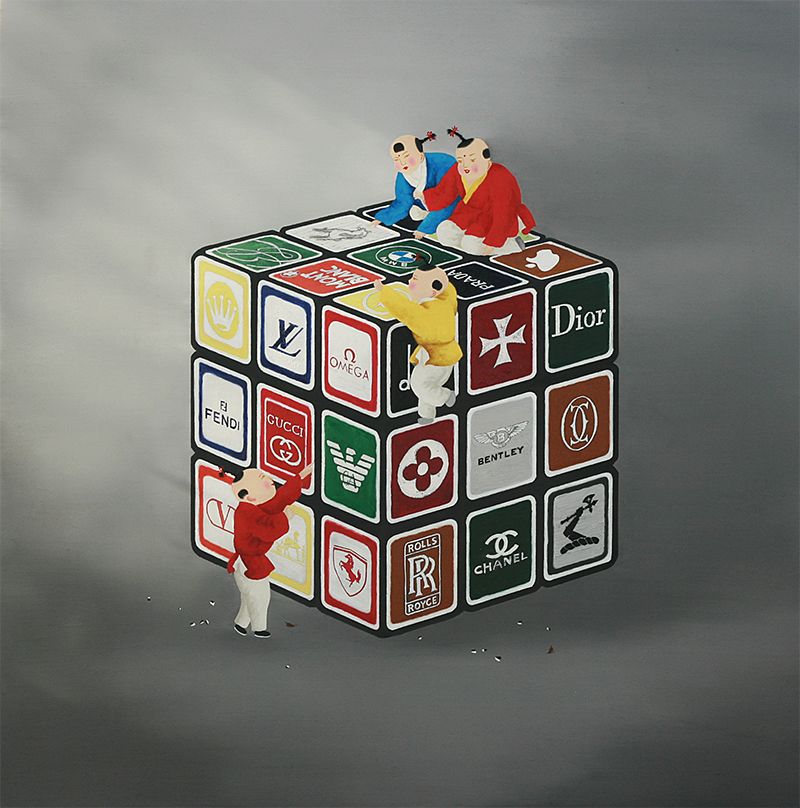
Hopscotch No.17, 2012
…….
“Cold, Clashing Cultures” is a story from our latest issue, “Law”. To continue reading, become a subscriber and receive the full magazine. Alternatively, you can purchase the digital version from the iTunes Store.
